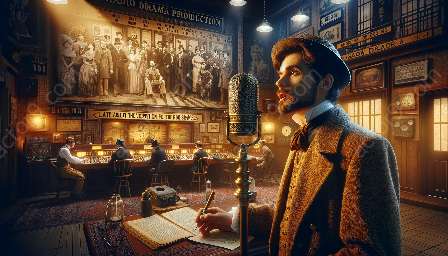Radio drama has long been a captivating art form that relies on the skillful portrayal of characters to bring stories to life. Balancing realism and creativity in character depiction is essential to engage listeners and create memorable experiences. This guide explores the intricate process of character development in the context of radio drama production, offering insights into the art of characterization and techniques for bringing characters to life through sound.
The Art of Characterization in Radio Drama
Characterization in radio drama is a multifaceted endeavor that requires careful attention to detail and a deep understanding of human behavior. The process involves infusing characters with depth, complexity, and relatability, allowing listeners to connect with the story on an emotional level. Realism and creativity play crucial roles in shaping the characters' personalities, motivations, and interactions, ultimately influencing the overall impact of the radio drama.
In order to master the art of characterization, radio dramatists must possess a keen sense of observation and an ability to empathize with diverse personalities. Through nuanced dialogue, vocal inflections, and sound effects, characters can be brought to life in the minds of the audience, transcending the limitations of the visual medium. By carefully balancing realism and creativity, radio dramatists can create characters that resonate with listeners and leave a lasting impression.
Striking a Balance: Realism vs. Creativity
When approaching character depiction for radio drama, it is crucial to strike a harmonious balance between realism and creativity. Realism grounds characters in authenticity, making their experiences and emotions more relatable to the audience. Through realistic dialogue, mannerisms, and reactions, characters come alive as believable entities, fostering a strong sense of immersion.
On the other hand, creativity infuses characters with vibrancy and originality, allowing them to stand out in the auditory landscape. Creativity enables radio dramatists to explore unconventional traits, backgrounds, and behaviors that challenge stereotypes and defy expectations. By creatively shaping characters, radio dramatists can introduce fresh perspectives and inject intrigue into their narratives.
Furthermore, the interplay between realism and creativity can fuel character development, fostering dynamic arcs and compelling internal conflicts. Realistic traits can serve as touchstones for authentic emotional experiences, while creative elements can spark innovation and imaginative storytelling. The seamless integration of these two aspects elevates character depiction to a higher level, captivating listeners and eliciting profound emotional responses.
Techniques for Achieving Balance
There are several techniques that radio dramatists can employ to achieve the delicate balance between realism and creativity in character depiction.
1. Empathetic Character Exploration:
By delving into the complexities of human nature and examining diverse perspectives, radio dramatists can cultivate empathetic characters that resonate with the audience. Empathy serves as a bridge between realism and creativity, infusing characters with genuine emotions while allowing for imaginative storytelling.
2. Authentic Dialogue and Expressions:
Realism is often conveyed through authentic dialogue that reflects the nuances of human communication. By paying attention to the natural flow of conversation and the subtleties of expression, radio dramatists can imbue characters with realism while leveraging creativity to craft memorable lines and interactions.
3. Layered Sound Design:
The use of sound effects and ambient noise can enhance the realism of character depiction, creating immersive auditory environments. Additionally, creative sound design can inject imaginative elements into the narrative, enriching the characters' experiences and adding depth to their portrayal.
4. Psychological Depth and Complexity:
Exploring the psychological dimensions of characters contributes to their realism, while introducing layers of complexity and intrigue. By delving into characters' inner thoughts, fears, and aspirations, radio dramatists can strike a balance between authenticity and creative depth.
Impactful Character Depiction in Radio Drama Production
In the realm of radio drama production, the art of balanced character depiction is fundamental to creating compelling narratives that resonate with audiences. Careful attention to realism and creativity throughout the production process elevates the quality of character portrayal, enriching the overall listening experience. As characters come to life through the convergence of voice, sound, and storytelling, their impact on the audience is profound and enduring.
Conclusion
Balancing realism and creativity in character depiction for radio drama is a nuanced and rewarding pursuit that demands a deep understanding of character development and storytelling. By leveraging the interplay between these two elements, radio dramatists can craft characters that captivate listeners, evoke empathy, and leave a lasting impression. Through meticulous attention to detail and an embrace of imaginative exploration, the art of characterization in radio drama continues to thrive, offering endless opportunities for creativity and authenticity.






















